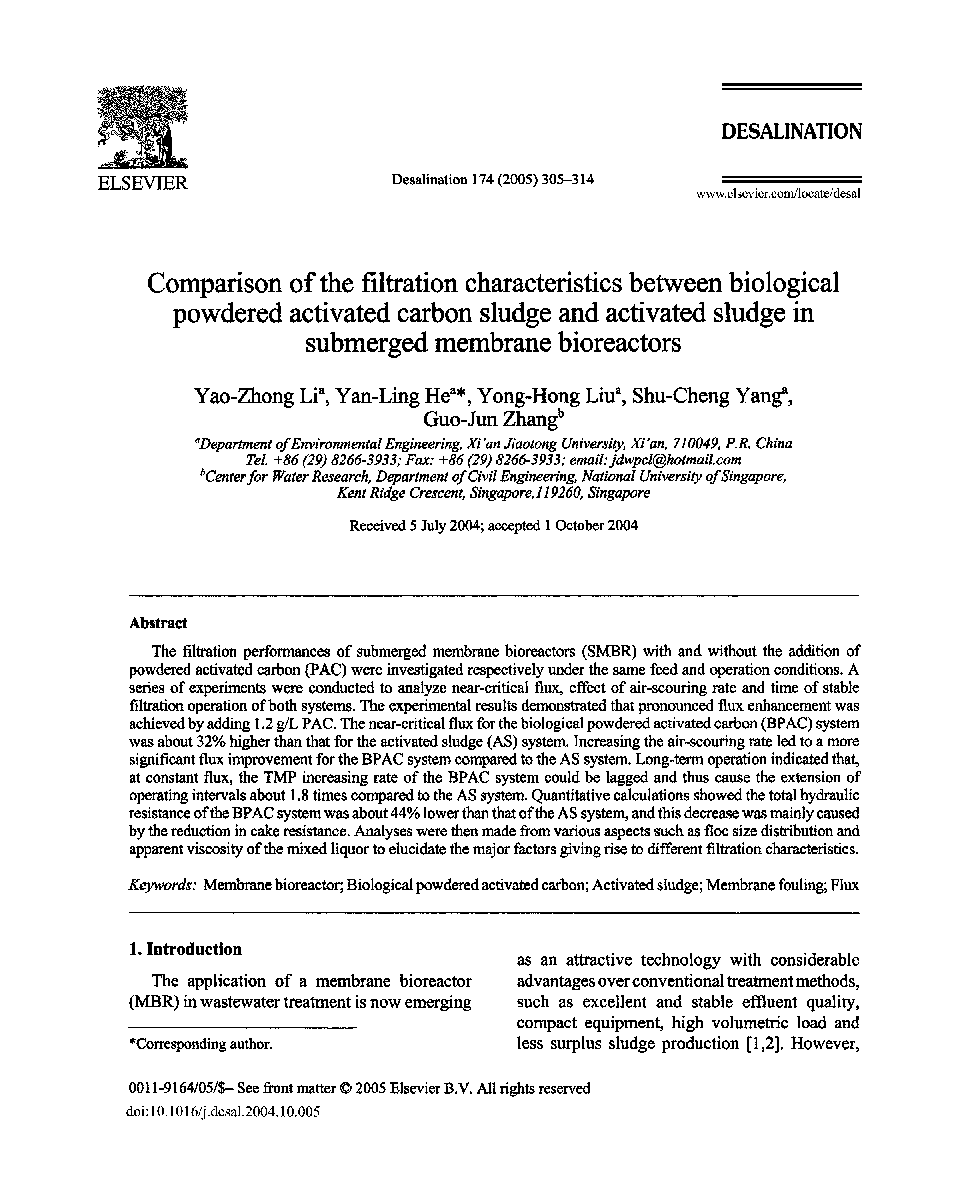| Article ID | Journal | Published Year | Pages | File Type |
|---|---|---|---|---|
| 10386377 | Desalination | 2005 | 10 Pages |
Abstract
The filtration performances of submerged membrane bioreactors (SMBR) with and without the addition of powdered activated carbon (PAC) were investigated respectively under the same feed and operation conditions. A series of experiments were conducted to analyze near-critical flux, effect of air-scouring rate and time of stable filtration operation of both systems. The experimental results demonstrated that pronounced flux enhancement was achieved by adding 1.2 g/L PAC. The near-critical flux for the biological powdered activated carbon (BPAC) system was about 32% higher than that for the activated sludge (AS) system. Increasing the air-scouring rate led to a more significant flux improvement for the BPAC system compared to the AS system. Long-term operation indicated that, at constant flux, the TMP increasing rate of the BPAC system could be lagged and thus cause the extension of operating intervals about 1.8 times compared to the AS system. Quantitative calculations showed the total hydraulic resistance of the BPAC system was about 44% lower than that of the AS system, and this decrease was mainly caused by the reduction in cake resistance. Analyses were then made from various aspects such as floc size distribution and apparent viscosity of the mixed liquor to elucidate the major factors giving rise to different filtration characteristics.
Related Topics
Physical Sciences and Engineering
Chemical Engineering
Filtration and Separation
Authors
Yao-Zhong Li, Yan-Ling He, Yong-Hong Liu, Shu-Cheng Yang, Guo-Jun Zhang,
